V-Set
03 Dec 2004
A V-Set is a handling strategy in which the handler orients the dog so it’s view and path avoid an off course obstacle that would be in line if the dog was oriented in line with all the obstacles. Here’s a definition where a diagram is invaluable. In the diagram on the left below if the dog was set up directly facing jump 1 it would be more likely to take jump 1, jump 2 and the off course jump “X”. The diagram on the right illustrates the orientation of the dog and it’s
exaggerated path using a V-Set.The V-Set puts the dog on an angle to the first jump so the dog doesn’t see the 2nd jump or the off course obstacle. The handler can then can use a number of handling strategies to turn the dog towards jump 2 between jumps 1 and 2. The idea is to shape the dog’s path so when it takes jump 2 it sees the next obstacle in the sequence instead of the off course obstacle. The “V” shape of the dog’s path is what gives this strategy its name.
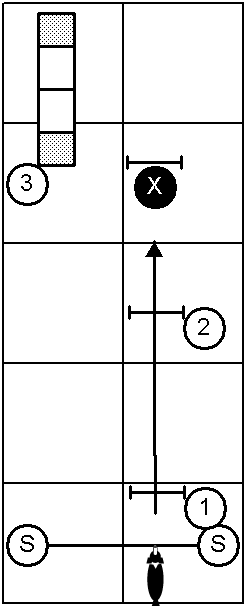
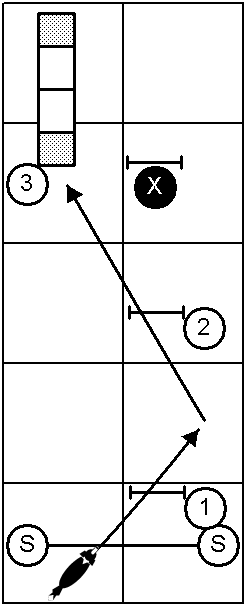
The V-Set is used most frequently at the start of a course. It can also be used on a sequence following a Stop obstacle like a Table or Pause Box. Conceivably it can be used following a contact obstacle if the dog is trained to stay until released on the downside contact.
There are many ways of handling the turn that forms the “V”. All depend on the course layout and your team’s abilities. I’ve diagrammed some possible approaches below.
| Post Turn V-Set Handling | Rear Cross V-Set Handling |
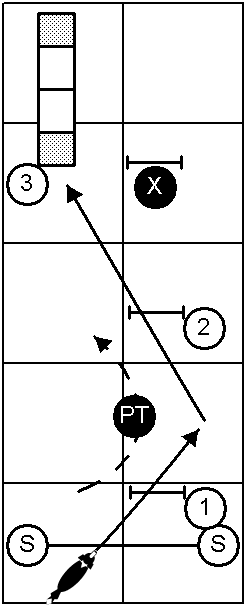 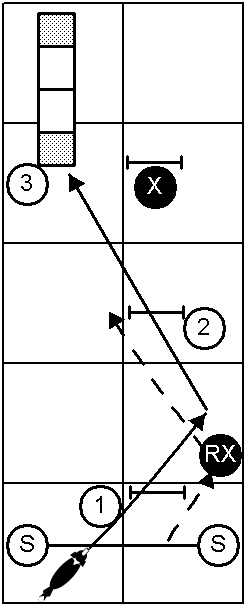 | |
Front Cross V-Set Handling
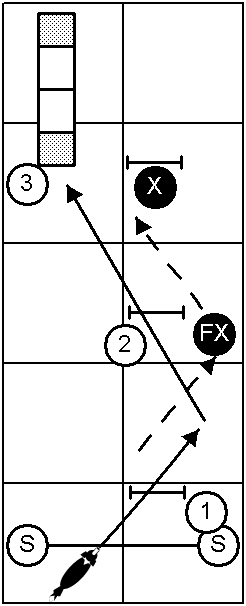

The V-Set trades time and distance for accuracy. Using the V-Set makes for a slightly longer and possibly slower path for the dog. But it may be worthwhile for some teams if it avoids an off course.
Please also see this discussion of alternative handlings for V-Set situations.
Click this link to search the whole site for “V-Set”.
If you enjoyed this article won't you please:  Thanks!
Thanks!
